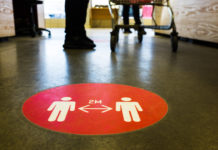Becca Doman, energy and renewables associate at law firm, Foot Anstey, examines whether heat networks are the future of the energy industry
How do heat networks work?
Heat networks (also known as district heating schemes) use a single boiler to provide heat for several buildings. A network of heavily insulated underground pipes supplies the heat to those buildings. As you might expect, there are various cost and administrative benefits of using a single boiler installation so the case is definitely there for heat networks to play a part in the future of the UK energy supply industry.
The barriers to heat networks in the UK
- Access to sufficient finance – the development of a heat network is a major infrastructure project and has high upfront costs.
- Lack of understanding about the low carbon alternatives to fossil fuel heat sources
- Consumer understanding of heat networks and their willingness to obtain their heat via a network (even though this could mean lower heat prices and no boiler maintenance requirements)
- Perceived difficulties of access to private land to install networks
Following a review of the future of heating by DECC in March 2013, the heat networks industry produced a code of practice for heat networks, which provides practical guidance on feasibility and design which should help address some of these barriers.
Use of heat networks in the UK
In Denmark district heating provides approximately 60% of heating but in the UK there are relatively few. However, this is set to change. For example, Bristol is in the process of developing the first stage of a new heat network and Plymouth is also considering the benefits of a similar CHP heat network project.
So are heat networks and CHP the future?
Currently less than 2% of heat in the UK is supplied through heat networks. However, not only can they provide affordable energy for all but they have an important role to play in the fossil fuel to low carbon transition.
Heat networks will not be a viable solution for all areas but it will be important for local authorities consider the options in their area and support viable proposals for heat network developments.
Of course, CHP powered heat networks are not a panacea for all the UK’s carbon emissions. Other renewable technologies such as solar and wind, as well energy storage technologies, will also be required if the UK is to become truly carbon neutral.
To learn more, please contact the author:
Becca Doman, Associate, Energy & Renewables at Foot Anstey LLP
Email: Becca.doman@footanstey.com
| Direct Dial: | +44 (0)117 915 4668 | ||
| Mobile: | +44 (0)7855 065587 | ||
| Web: | http://www.footanstey.com |








